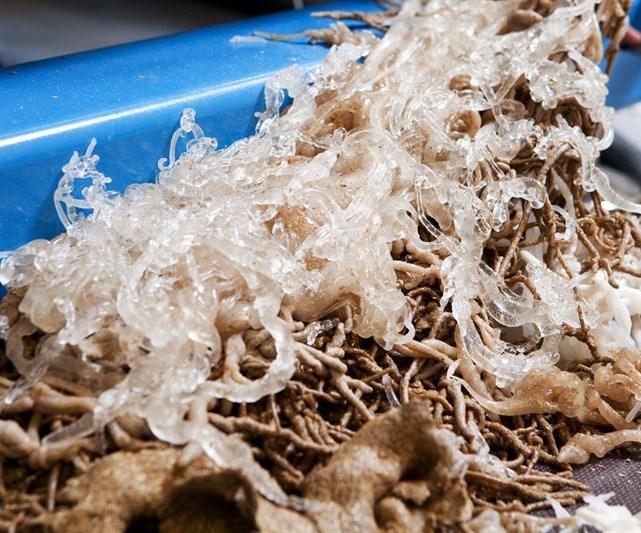Partner Sought for Commercialization of "Revolutionary" Extruder for Recycling
The cylindrical extruder developed by VTT could revolutionize processing of recyclable materials including plastics, textiles and food waste.
Just last month, I reported on Finland’s VTT joining Think Beyond Plastics as an R&D partner. In that role, VTT will support the New Plastic Economy Innovation Center’s innovators and entrepreneurs by offering R&D services to accelerate the development of innovations in the area of circular plastics.
In keeping with that theme, VTT researchers just announced a prototype of a newly developed cylindrical extruder that they say promises to revolutionize the processing of recyclable materials and thereby promote circular economy business. The extruder can be used to turn problematic textiles and plastics, as well as food waste, into pellets. The first prototype has already exceeded the industrial steering group’s expectations during initial testing, and VTT is now looking for a partner to commercialize the technology.
VTT’s research scientists have been testing the prototype’s performance with pieces of plastic film, mixed plastic waste, various kinds of textiles and bread. In addition to recycling, the device has been used to produce long-fiber composites, and it can also be utilized in food and feed processing.
Behind the idea for the novel extruder is VTT research scientist Hannu Minkkinen, who discovered that materials can rotate around the device’s hollow cylinder. The device was designed and the prototype built with funding from Business Finland’s and VTT’s funding instrument for commercialization of research results. “Commercializing the device would create completely new possibilities both in terms of waste processing and novel material combinations”, explains VTT’s principal scientist Tomi Erho.
The diameter of the extruder screw determines the size of the feed throat and also the kinds of materials that the device is capable of processing. The first prototype has a screw diameter of 30 cm (11.81 in.) instead of the 3–4 cm (1.18-1.57 in.) typically found in conventional devices of the same output.
The large diameter combined with a shallow screw channel reportedly makes it possible to mix different components of problematic, porous and lightweight materials and to make the mixed mass compatible with the next stage of the production process. Benefits claimed compared to conventional extruders include:
● Thanks to the simple design of the device, it is cheaper to make than traditional mixing twin-screw extruders.
● VTT’s first prototype is less than two meters (6.65 ft.) long and weighs 1.5 tons (3000 lb). Thanks to its short length, the device can also be mounted upright if necessary.
● The compactness of the device makes it possible to transport to where it is needed.
● The design enables accurate temperature control combined with efficient mixing and, considering the size of the device, exceptionally long residence time. This can be a benefit when processing materials such as food and feed.
● Long fibers can be processed without cutting them, which is useful when processing textiles, for example, or when mixing fiber composites.
Related Content
-
BMW Group Vehicle to Adopt 3D Printed Center Console
A vehicle coming to market in 2027 will include a center console carrier manufactured through polymer robot-based large-format additive manufacturing (LFAM).
-
For Extrusion and Injection-Blow Molders, Numerous Upgrades in Machines and Services
Uniloy is revising its machinery lines across the board and strengthening after-sales services in tooling maintenance, spare parts and tech service.
-
Skipping the Pellet for Efficient Recycling in Molded Engineering Plastics Applications
AGS Technology leverages deep experience in molding with recycled engineering materials for automotive and heavy equipment parts.

















